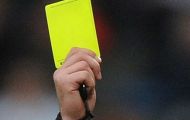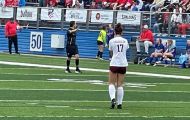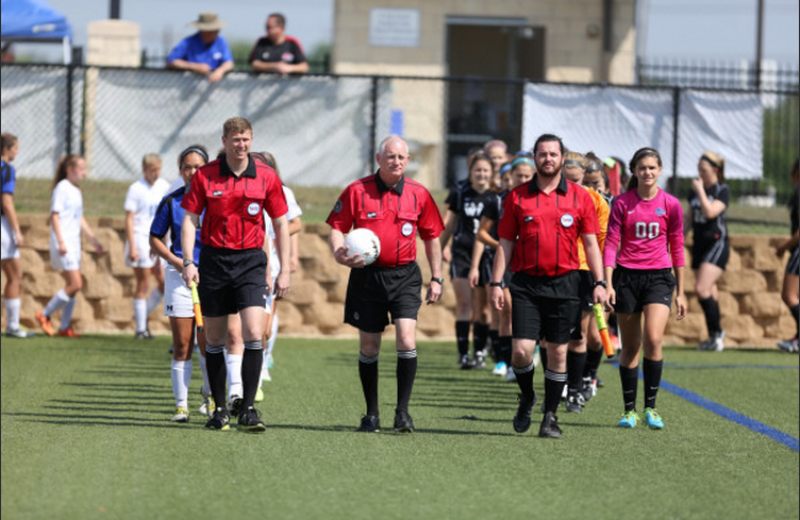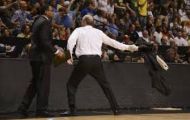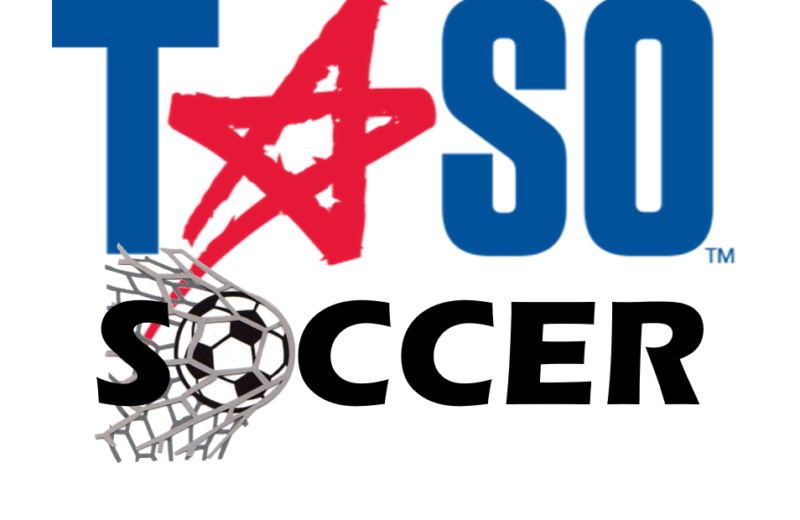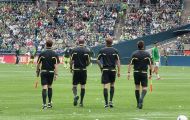
Offside Rule Revised in High School Soccer
A new interpretation of the offside rule in high school soccer is among the rules changes approved for the 2016‑17 season.
The new language regarding offside in Rule 11‑1‑4 is one of two
major changes recommended by the National Federation of State High
School Associations (NFHS) Soccer Rules Committee at its January 25‑27
meeting in Indianapolis. All rules changes were subsequently approved by
the NFHS Board of Directors.
“The rules are in fairly decent shape,” said Theresia Wynns,
NFHS director of sports and officials and liaison to the Soccer Rules
Committee. “The committee wasn’t looking to make wholesale changes. They
were looking at existing rules and making sure they reflected today’s
trends in the playing of the game.
“Offside is one call in soccer that was identified in the
annual NFHS survey as being incorrectly administered,” Wynns said. “This
change makes offside more understandable and should result in better
administration of the offside rule.”
Previously, an attacking player who was in an offside position
at the time that the ball was played by a teammate, could be penalized
and ruled offside when the ball was deflected by or rebounded from a
defender to the attacking player even though the defender tried to play
the ball.
The new rule changes this situation as the attacking player in
an offside position when the ball was kicked by a teammate who gets a
rebounded or deflected ball after it was deliberately played by the
opponent (except from a deliberate save), is no longer offside and is
not considered to have gained an advantage.
“An example of this new rule would be if attacking player A1
kicks the ball to teammate A2 who is in the offside position behind
defender B, and defender B jumps to play the ball but is unable to
control the ball as it touches the top of his/her head and deflects to
Player A. In this situation, since B played the ball, A2, although in an
offside position, is not offside,” Wynns said. “One important point to
remember about offside is that being in an offside position does not
mean that a player is offside. To be offside, a player must be involved
in active play, interfering with play or an opponent, or seeking an
advantage.”
A change in Rule 14‑1‑4 now mandates a penalty for a violation
by the kicker prior to taking a penalty kick to be the same as a
violation by any other member of the attacking team. Previously, a
violation by the kicker prior to taking the penalty kick resulted in the
kick being retaken. The rules committee felt that all attacking team
violations during a penalty kick should be treated equally.
“An example of a violation by the kicker in a penalty kick
situation is an interruption of movement in the approach to the ball,”
Wynns said. “Previously, this violation would result in a verbal warning
and a rekick. Under the new rule, the ball can be kicked and the result
is the same as any other attacker violation. One result might be that
the goalkeeper saved and held the ball. In this case, play will now
continue, where previously a rekick would occur. The committee wanted to
be a little more consistent with penalty kicks.”

